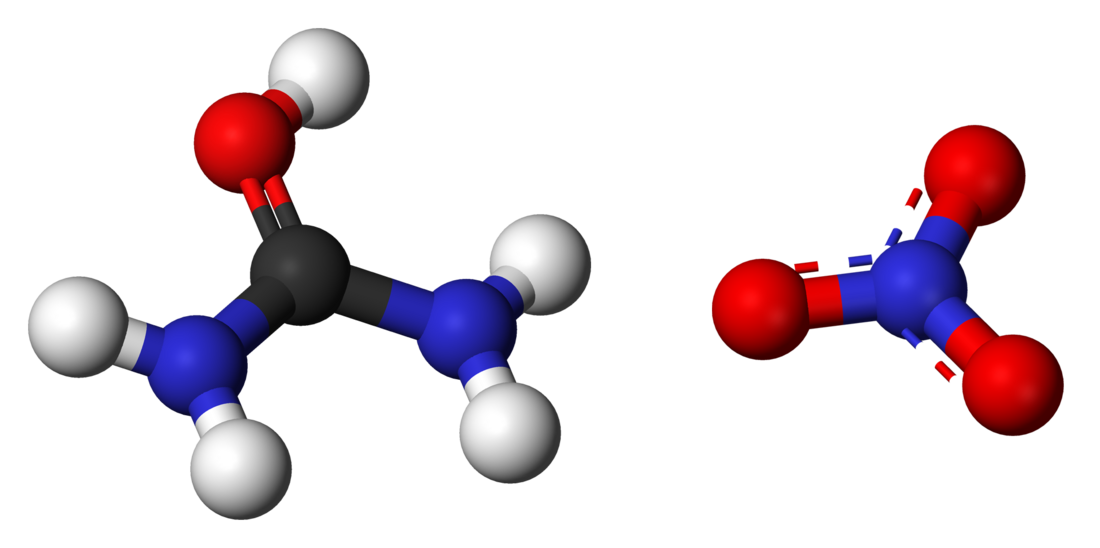Top Qs
Timeline
Chat
Perspective
Urea nitrate
Chemical compound From Wikipedia, the free encyclopedia
Remove ads
Urea nitrate is a fertilizer-based high explosive that has been used in improvised explosive devices in Afghanistan, Pakistan, Iraq, and various terrorist acts elsewhere in the world such as in the 1993 World Trade Center bombings.[2] It has a destructive power similar to better-known ammonium nitrate explosives, with a velocity of detonation between 3,400 m/s (11,155 ft/s) and 4,700 m/s (15,420 ft/s).[3] It has chemical formula of CH5N3O4 or (NH2)2COHNO3.

Urea nitrate is produced in one step by reaction of urea with nitric acid. This is an exothermic reaction, so steps must be taken to control the temperature.
It was discovered in 1797 by William Cruickshank,[4] inventor of the Chloralkali process.
Urea nitrate explosions may be initiated using a blasting cap.[3]
Remove ads
Chemistry
Summarize
Perspective
Urea contains a carbonyl group. The more electronegative oxygen atom pulls electrons away from the carbon atom, forming a polar bond with greater electron density around the oxygen atom, giving it a partial negative charge. In a simplistic sense, nitric acid dissociates in aqueous solution into protons (hydrogen cations) and nitrate anions. The electrophilic proton contributed by the acid is attracted to the negatively charged oxygen atom on the urea molecule and the two form a covalent bond. The formed O-H bond is stabilized into a hydroxyl group when the oxygen abstracts an electron pair away from the central carbon atom, which leads to bond resonance between it and the two amino groups. As such, the urea cation can be thought of as a amidinium species. Paired with the spectator nitrate counteranion, it forms urea nitrate.
- (NH2)2CO (aq) + HNO3 (aq) → [(NH2)2COH]+[NO3]− (s)
The compound is favored by many amateur explosive enthusiasts as a principal explosive for use in larger charges. In this role it acts as a substitute for ammonium nitrate based explosives. This is due to the ease of acquiring the materials necessary to synthesize it, and its greater sensitivity to initiation compared to ammonium nitrate based explosives.[5]
Remove ads
References
Further reading
External links
Wikiwand - on
Seamless Wikipedia browsing. On steroids.
Remove ads






